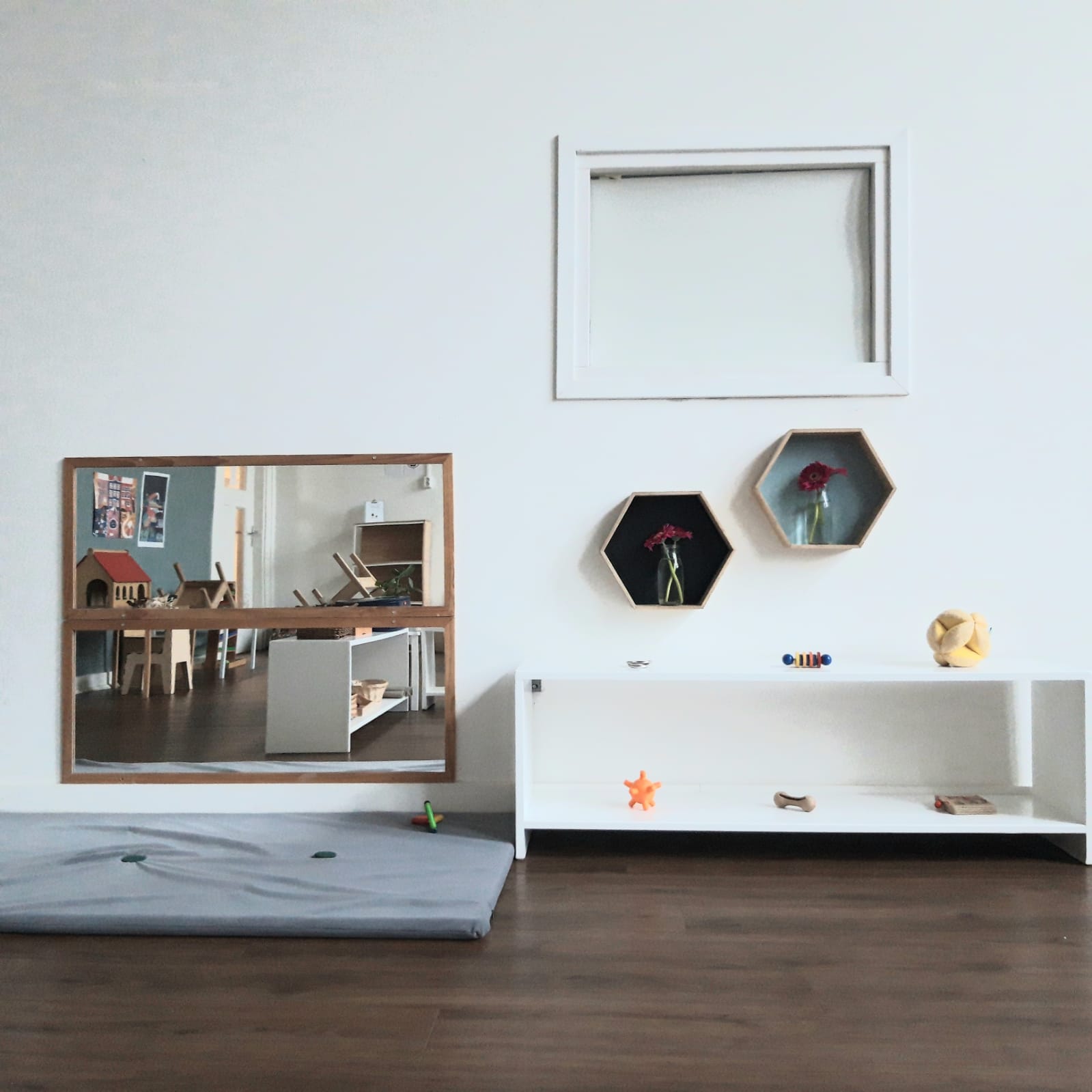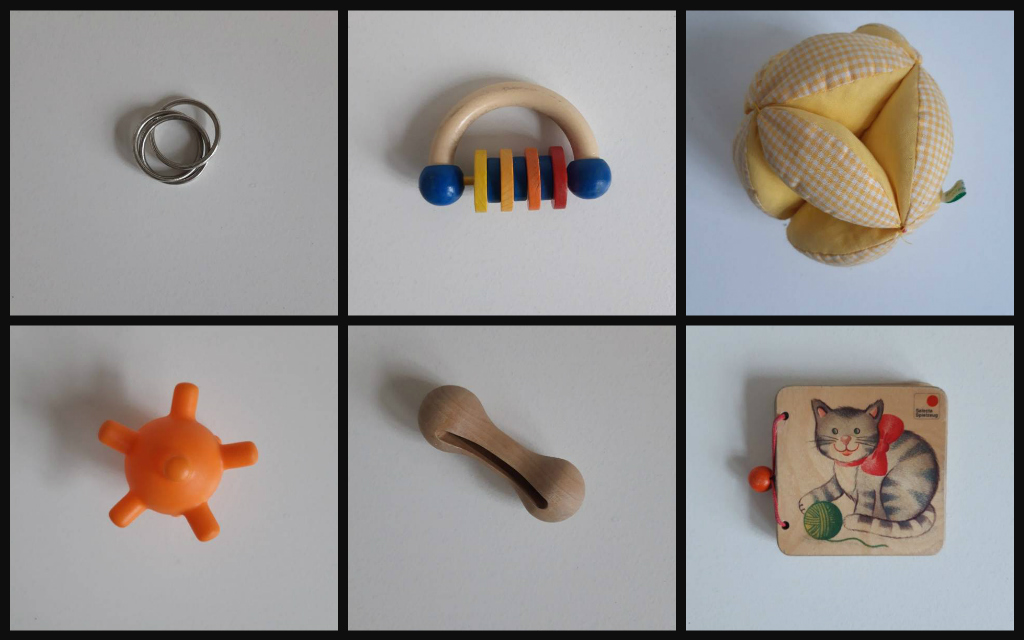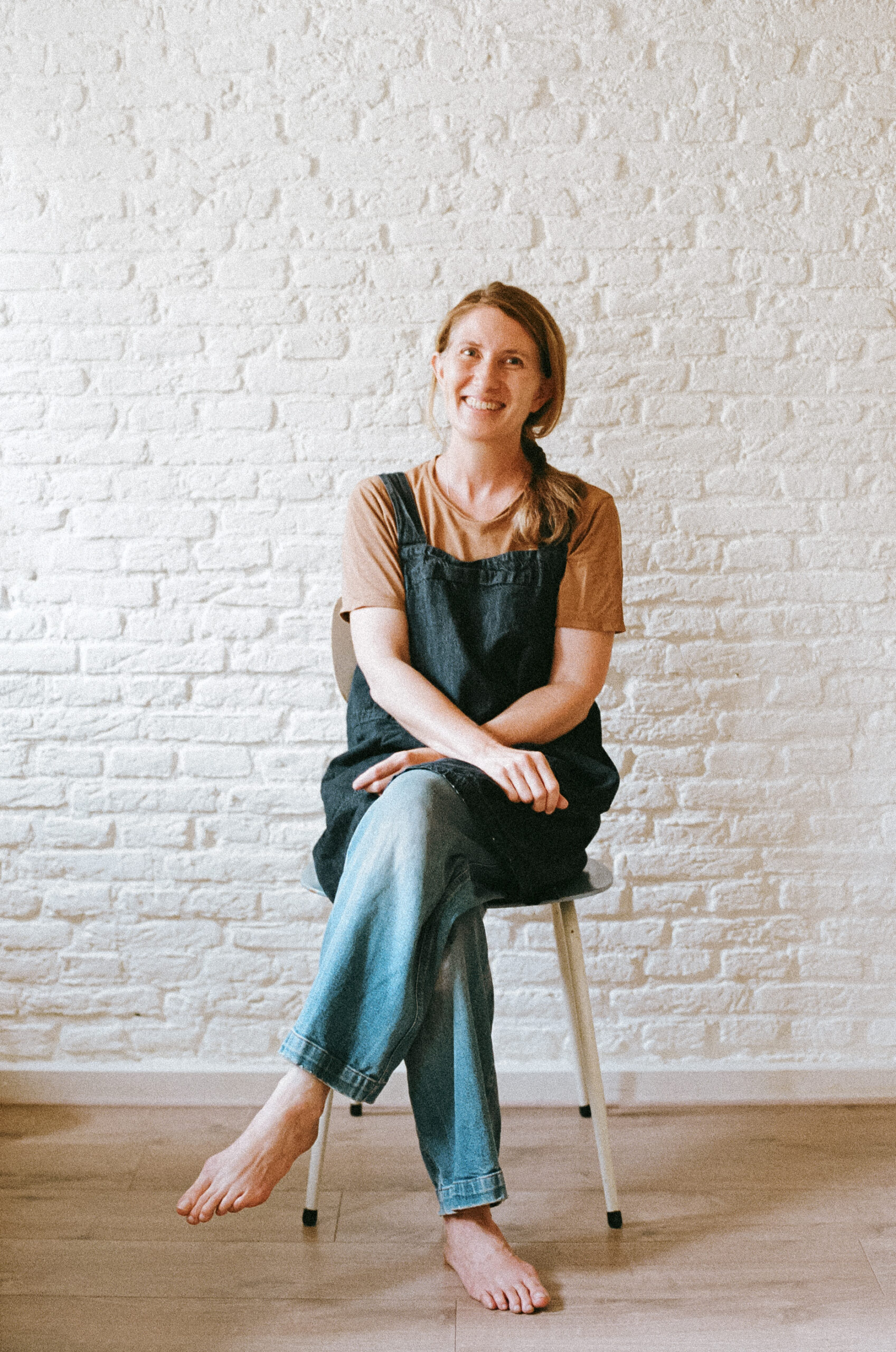Montessori activities at 3 to 6 months
I regularly get asked by people what activities might be suitable for their child. So over the coming newsletters, I’ve decided to make a Montessori shelfie by age group. Hopefully this will be a helpful resource over the coming months.
Also, don’t forget I put together this free 42-page download for you of Montessori activities by age (0 to 4 years).
So let’s start today with Montessori activities at 3 to 6 months for our young babies.

What is the child working to master at this age?
The first question we can ask ourselves when choosing an activity is “What is my child working to master right now?”
Montessori activities are child-led. So we look at the child to see what they are working to master at each age and offer toys and materials to help them. This is different to the traditional approach where the adult decides what a child is meant to learn and then we teach them.
The ages given here are then guidelines only as each child is developing on their own timeline, in their own unique way, with their own interests.
A young baby from 3 to 6 months is developing:
1. Language
Babies show an interest in us and our daily life. We can tell them what we are doing, we can have conversations with them by repeating the sounds they make, and we can even poke out our tongue and they will try to copy us.
2. Movement
Allow lots of time for free movement. Whenever possible, lie them on a mat on the ground for them to stretch, reach for their feet, and lying next to a horizontal mirror is a favourite too. Take off their socks, make sure they have free movement in their clothing and have something for them to reach and grasp.
3. Hand-eye coordination
The activities on the shelf are aimed at building their hand-eye coordination. Around 3 months, a baby can grasp onto an object that fits into their palms. They will bring it to their mouth to explore. They are strengthening their grasp and learning to manipulate objects with their hands. We can also hang items one at a time from a play gym for them to kick at with their feet.
4. Aural development
They are also responding to sounds in the environment, so a small bell in a rattle or metal rings are very attractive. A bell hanging on a ribbon provides a welcome opportunity for practising batting.
The Montessori shelfie at 3-6 months
- Silver rings – these were a gift from Sarah Moudry for my classes, actually sold as a napkin ring from Crate and Barrel. Genius, right?
- Wooden rattle – here in the Netherlands we have a wide range of wooden rattles for young children. Look for ones that are made from natural materials, are not too large, and are easy for them to grasp. This one by HABA.
- Patchwork ball – the segments can be grasped by the baby and brought to their mouth. I also love to hang this from a play gym using a ribbon for them to kick up at, bat with their hands, or grasp onto without it rolling away. I found this handmade one at the TAA (there is a store on Leidseplein).
- Nipple ball – a great teething ball. This one is BPA-free from the Rolf group here in the Netherlands.
- Wooden rattle with bell – this one is from Manine Montessori. Look for similar lightweight, wood that feels smooth, and bells inside are a lovely addition helping cause and effect when shaken
- Wooden board book – this was donated to our classroom, but look for similar wooden books for young babies with simple, attractive pictures. These are nearly indestructible for teething babies.
- Don’t forget a low mirror (the one above from Ikea) and a movement mat (the one above by ByAlex Playmats)

I hope this is helpful for those of you with young babies.
Wanting more activities?
- 3 – 6 months
- 6 – 9 months
- 9 – 12 months
- 12-15 months
- 15 – 18 months
- 18 – 21 months
- 21-24 months
- 2 years – 2 years 3 months
Check back for more activities by age coming soon. You can also download a free 42-page pdf of Montessori activities by age (0 to 4 years) from my website.

Simone Davies has more than 20 years’ experience as an AMI Montessori educator. Simone is the author of “The Montessori Toddler” and co-author of “The Montessori Baby” and “The Montessori Child” books, comprehensive guides to raising children in a Montessori way. She currently runs parent-child Montessori classes in Amsterdam at her school Jacaranda Tree Montessori. She also has a popular blog, instagram and podcast “The Montessori Notebook” and is mother to two young adults.